 ICAR-Central Institute for Arid Horticulture
ICAR-Central Institute for Arid Horticulture

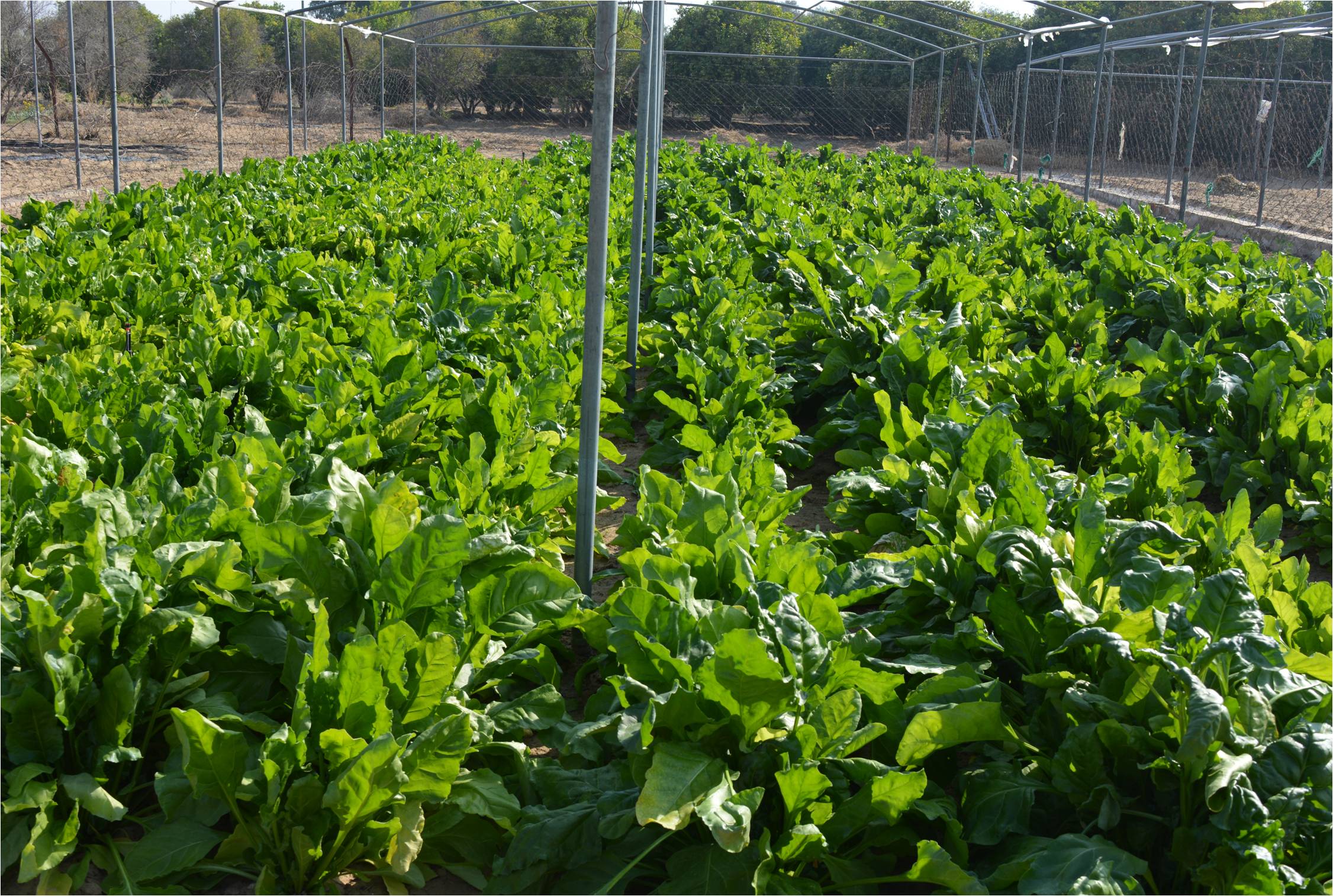
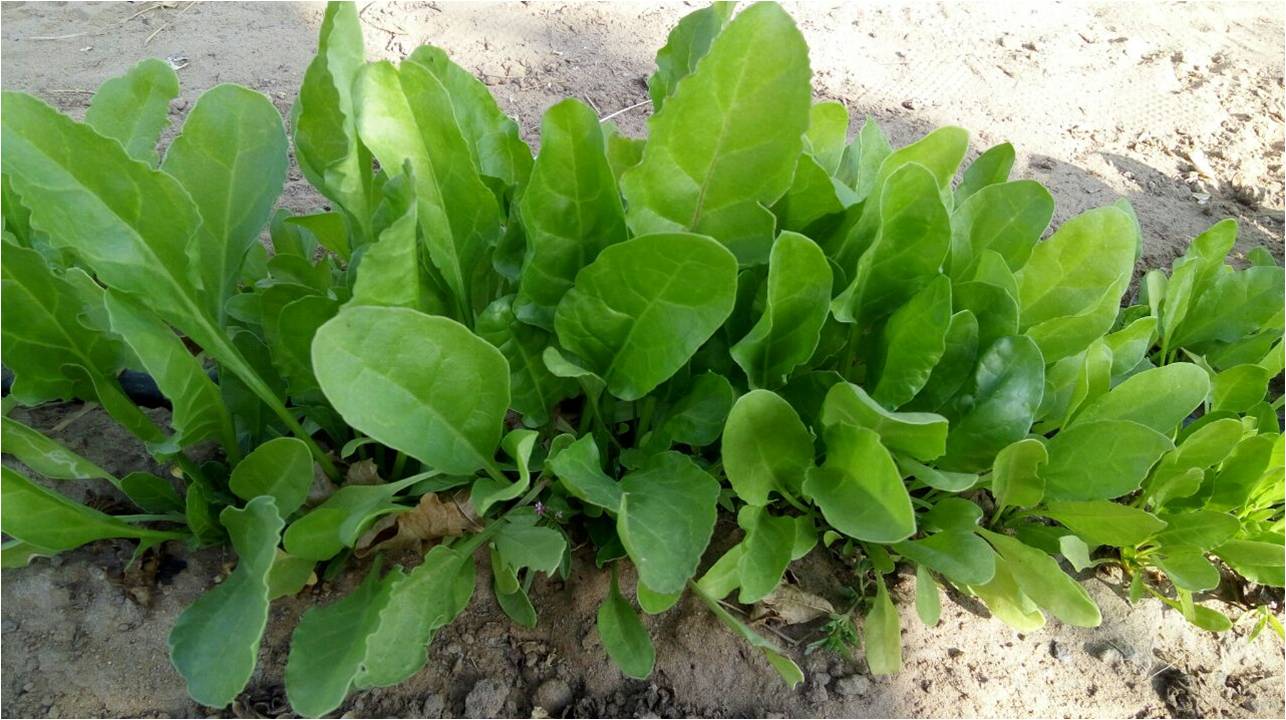

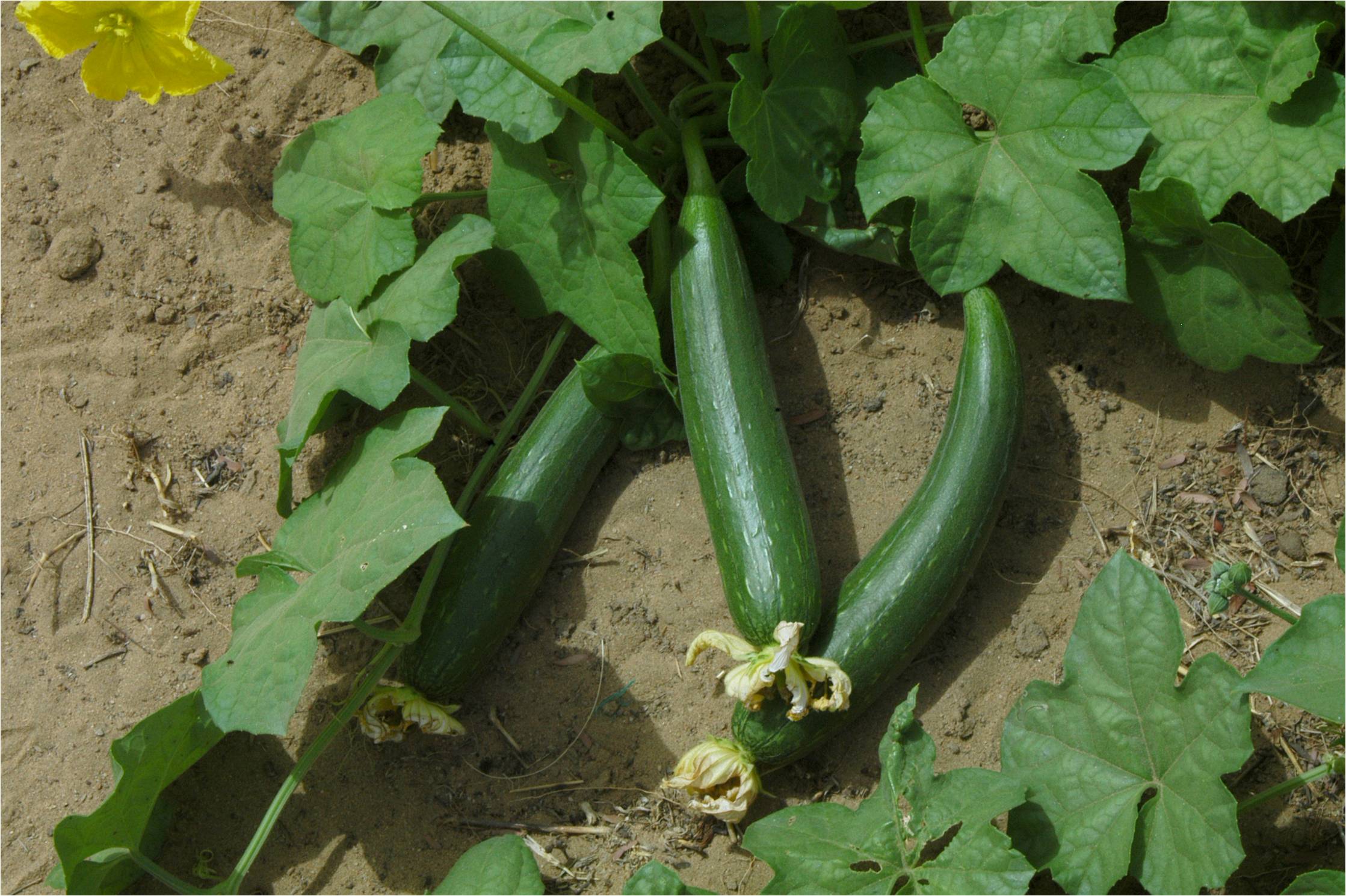
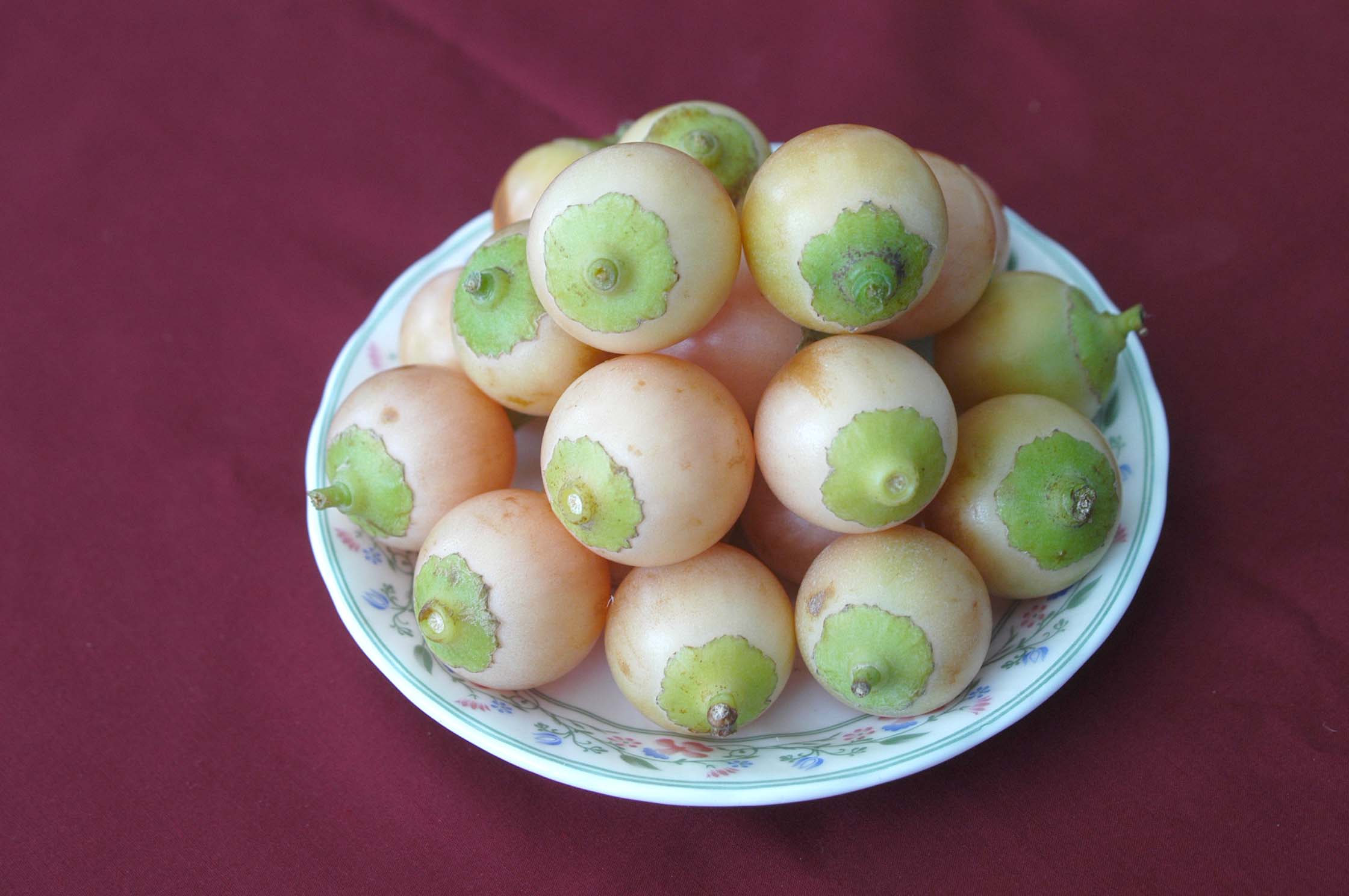






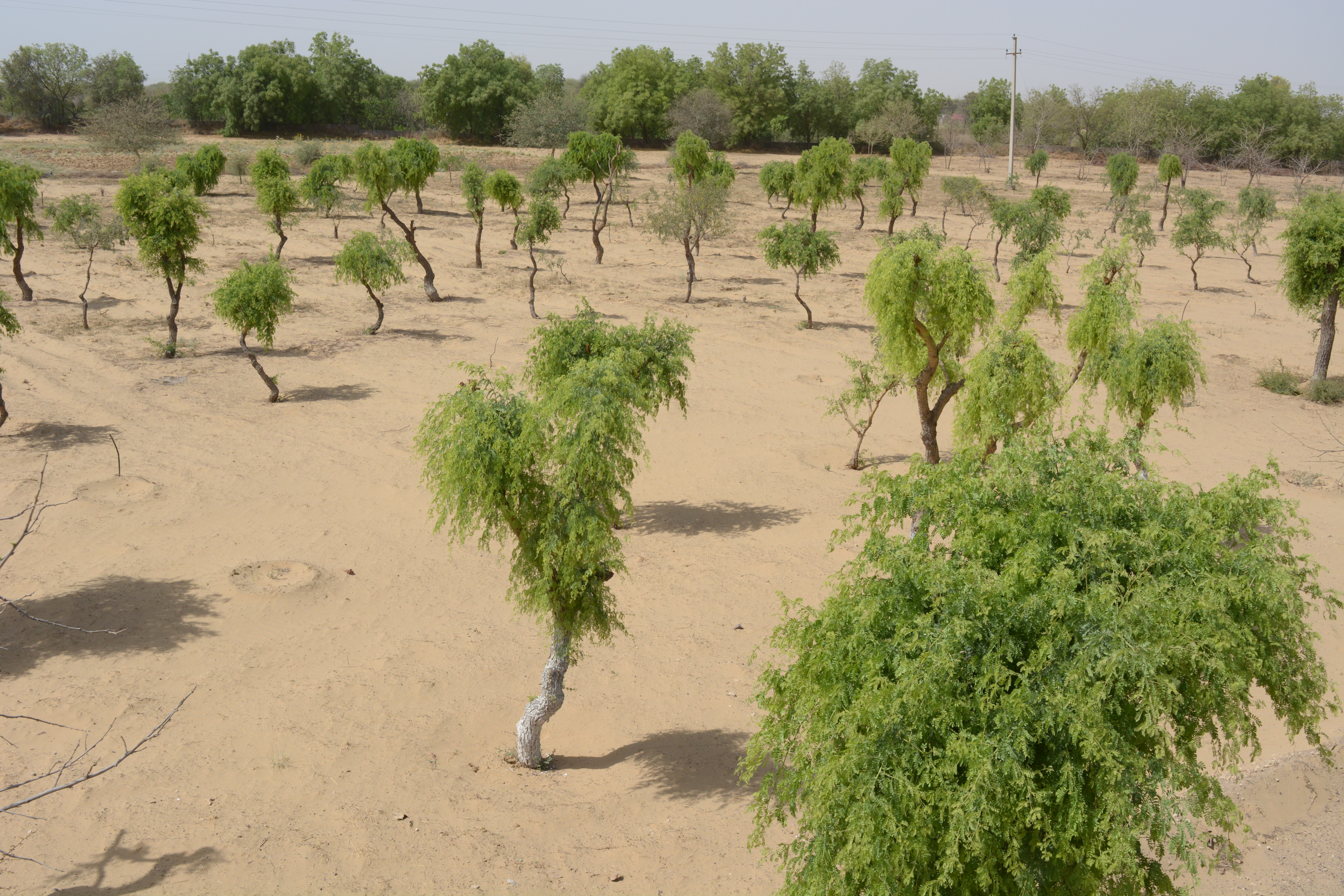




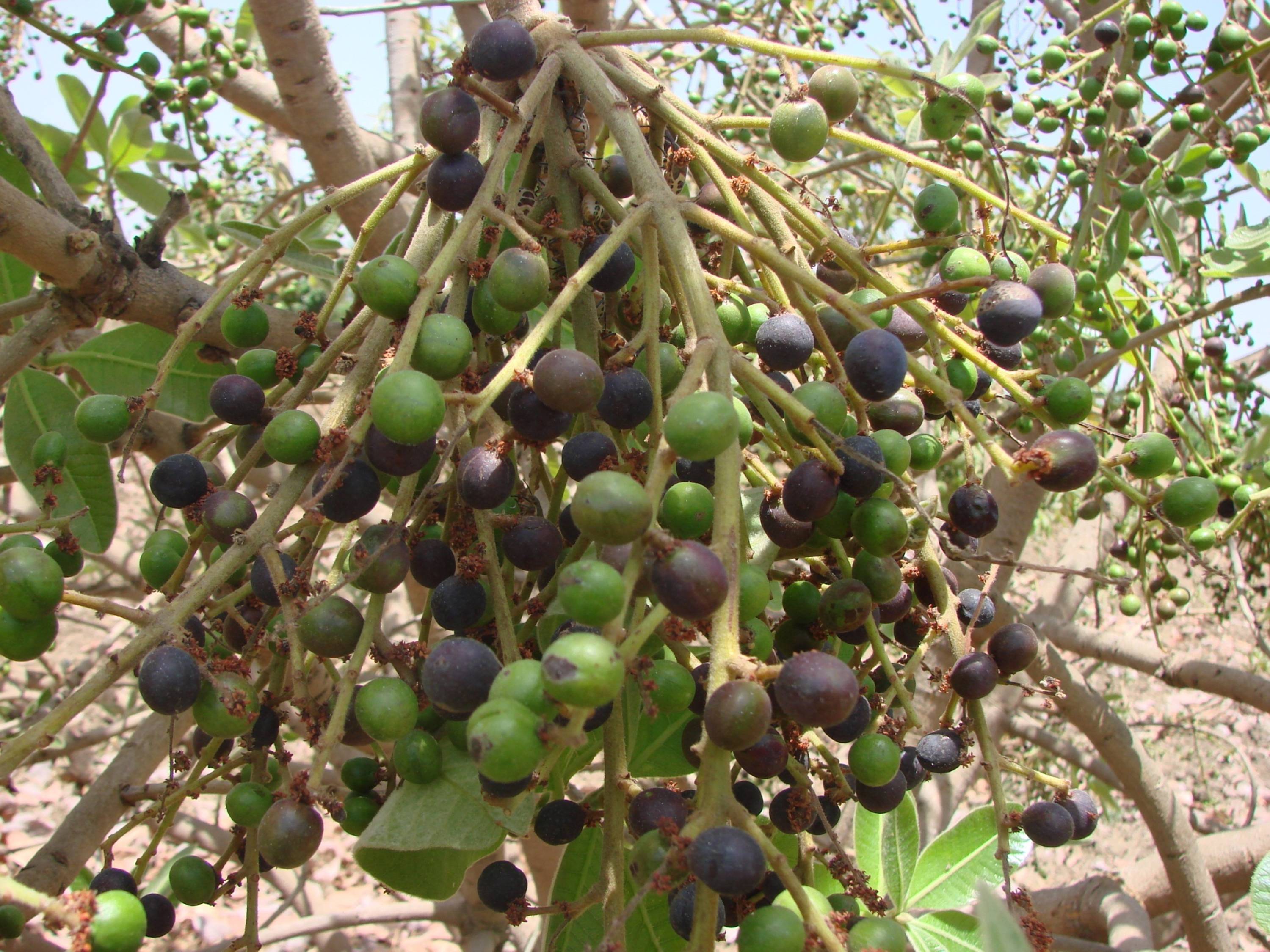

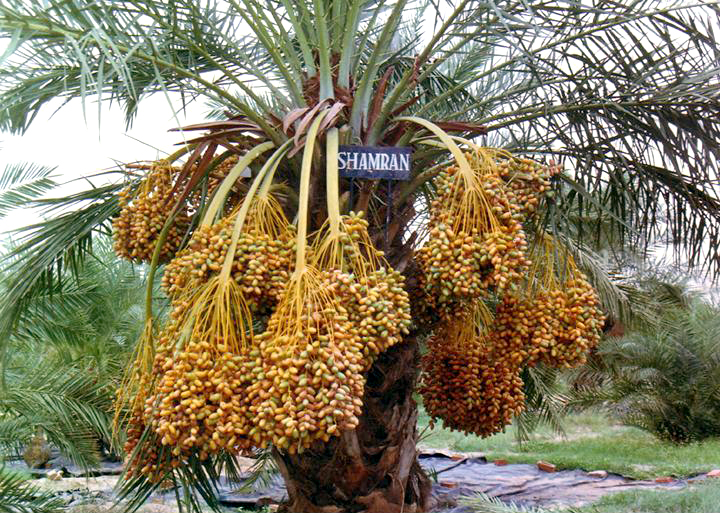


 ICAR-Central Institute for Arid Horticulture
ICAR-Central Institute for Arid Horticulture






















HBCPSMA - Innovative concept for enhancing crop productivity, resource management and eco-restoration (Samadia, 2016)
The native crop-plants both annual and perennial are playing an equally vital role for food and fodder especially in hot arid and sem-arid areas of Rajasthan where animal husbandry is an integral component of agriculture system. The monsoon supported arid zone crops under conventional farming are drought tolerant and even harvest failure with absolute rainfed situation is estimated 50-80% in most of years only due to uncertainty in rain's pattern. Based on my research experience and SWOT analysis for about 25 years, it is accomplished that the state has excellent agriculture production potential with wide and varied opportunities of crops, resource utilization and ecological sustainability. In-spite of several environmental restrictions and bio-physical constraints, the state can be classified into three distinct zone i.e. hot arid, semi-arid and sum-humid for horticultural perspective. With changed scenario and climatic variations, now, it is necessity to have new concepts with most prospective plant species for enhancing crop-genotype productivity through agri-horti-silvi-pastoral integration initiatives.
Production and marketing of high value and diverse crops is a key to generate more income per unit area and time round the year. The crop productivity in most of the Indian fields in comparison to the China is low and distance is quite large, and this wide gap arises several questions on types of genotypes and quality of seed/planting material being used, level of adoption of technologies and management of resources. Hence, special attention is needed to exploit genetic resources of native crop-plant species for developing varieties or trait specific/value added genotypes and viable farming systems suited to the prevailing agro-climate. In addition, quality and productivity of recommended crop-genotypes can be further enhanced when due consideration is given to in situ rain-water harvesting, adoption of improved practices and modern techniques under the innovative concept-HBCPSMA as model approach.
Environmental issues
The Rajasthan state is a marginal zone for agricultural production and the extremes of high and low temperature and scanty rainfall together with associated abiotic stressed conditions limiting crop choice, quality of produce and yield potential. In north-western part, March-October months are hot, dry and shiny with continuous high temperature around 380 C for prolonged period of time, and resulted to excessive evapo-transpiration from plants and soil. The maximum temperature in May-June varies from 420C in the west to 400C in the east, but it is very common to experience high temperature range from 48-500C for number of days. The winter is dry and minimum temperature is ranged from 4-100 C in December-January and some times it prolonged up to February. Most of the years, low temperature dips-down below freezing point (-1 to -60 C) and occurrence of frost is frequent in the hot arid areas.
The sand-dunes field soil is coarse texture, poor in fertility and water retention capacity. The arid region encounters strong winds and fertile top-soil, sand and other fine particles is continuing blow away leading behind coarse substrate poor in nutrients, and thus affecting production potentials of farm-land. The problem becomes more serious in fields which have to ploughed in summer months, and remain without any protective plant cover till the on-set of monsoon. The crops also get damaged through sand blasting on seedlings, leaves, stem, buds, flowers and tender fruits during heat waves and dusty wind storms (LOO and ANDHI). The young seedlings or plants get buried under sand and vine plants disturbed badly, and have adverse affects on crop growth and quality of produce.
The variable zones of the state receiving 150-650 mm of rainfall and is mostly concentrated between the months of June-September. Out of 9-21 mean rainy days/annum, much of rain often comes in a few (1-5) rainfall events in the monsoon season which is erratic and uneven resulting to situation of drought both due to soil and atmospheric water deficit. Hence, crop productivity and quality is primarily depends upon availability and management of rain/ irrigation water in the production sites. Moreover, it can be efficiently improved with due considerations given to development of crop specific production sites for managing adverse effects from abiotic factors (drought, high temperature, hot winds, high evapo-transpiration, high sun-shine, low relative humidity and high wind speed and low temperature, cold winds and frost) of the sub-zones in particular.
Production issues
Horticultural exploitation with native crop-plant species is generally found to be potential and stable under the environmental restrictions. Systematic horticulture with potential crops is very limited and productivity and quality of produce is marginal in most of the sub-zones of hot arid, semi-arid and sub-humid region of Rajasthan. This is primarily because of unavailability of desirable crop-genotypes suited to the prevailing agro-climatic conditions &/or environmentally stressed production sites of the zone, unavailability of requisite quality seeds / planting material of recommended crop–genotypes for growing under varying production situations and lack of appropriate technology. Therefore, there are essentially two complementary requirements for enhancing productivity i.e. improvement in the genetic make-up as provisions for suitable crop-genotypes and development of favourable micro-climate in production sites of the defined zone to minimize the ill-effects of the adversity.
Now, it is well recognized that majority of adaptive crops can be grown successfully in the arid and semi-arid areas with right selection and/or slight modifications in genotypes, adoption of improved techniques and good management practices. High-tech does not mean the crop production only under green-houses or controlled conditions. In my opinion, definition of high-tech production is very wide and still there is ample scope to recast it in relation to the crops and types of produce be desired, technology required to be modified for improving productivity of resources and minimize the ill-effects of environmental restrictions in production sites. Thus, it can be an intervention of improved, modern and innovative technologies for enhancing productivity of resources in obtaining higher crop yields, and components are:
A) Improved technology
1) Better crop-genotypes for high quality yields under defined system of the sub-zones.
2) Modification in time and techniques of crop sowing/planting and plant population/unit area.
3) Integration of crop management and protection practices.
4) On-farm value addition and post-harvest management.
B) Modern technology
1) Drip / pressurized technology for crop production.
2) Crop architecture and use of bio-regulators.
3) Adoption of farm mechanization and trellis system for vertical harvest.
4) Protected technology for nursery-raising, and zero-energy and low-cost structures for off-season crop raising and to escape the effects of low temperature conditions.
C) Innovative technology
1) Development and management of crop production sites (HBCPSMA) for the promotion of horticulture and to minimize the ill-effects from abiotic and biotic factors.
2) Promotion of crop-commodity production sites together with stable supply of seed/planting material, and storage, processing and marketing chain.
HBCPSMA-Concept towards doubling farm income
The limited, scattered and marginal quality production in horticultural significant crop-plants in the diverse zones of the state fields invites attentiveness for apposite crop-genotype and their seed/planting material, adoption of technological advancements for resources utilization and management of production sites. Further, existing productivity levels cannot help in doubling farm income and meeting out increasing demand under the restrictions from abiotic and biotic factors and climatic variations, and therefore, the need is to exploit untapped land and multiple-use crop-plants for diversified production adopting innovative concepts, modern techniques and good management practices as integrated approach for commercialization of horticulture.
For success in horticulture with arid to semi-arid sub-tropic hot agro-climate, land-use plan of the crop production site is the pre-requisite considering the environmental factors, resources availability and big sized (4-10 ha) holding of unit fields. Based on R & D studies and experience gained over 25 years, this innovative concept is postulated by me and recommended for development and management of horticultural based crop production sites. In this concept, major emphasis is on creation of favourable micro-climate and protection of crops in production sites, and is the primary requirement for promotion of horticulture. Besides, adoption of innovative and improved management practices and agro-technique for the specific crop combinations is the key inputs for efficient resource utilization and minimizing the ill-effects from abiotic and biotic factors. This crop-genotype-environmental interaction technological advancement is recommended as Horticulture Based Crop Production Site Management Approach (HBCPSMA, Samadia-2004).
a) Khejri based crop production sites
The traditional cropping systems have provided sustenance to the desert dwellers. In vast spread arid farm lands, cultivation of pearl millet, cluster bean, moth bean, sesame and native cucurbits is done as component crops between the natural plantations of khejri (Prosopis cineraria), and in addition some native trees/shrubs/grasses (jharber, bordi, lasora, pilu, ker, phog, sewan, etc) are the part of traditional agri-horti-silvi-pastoral system prevalent under rainfed situations. This system of harvesting of agricultural produce can provide sound farm economy, improved nutrition and health standards of the livelihood and stability when the monsoon rains is good during the kharif season. With the changed scenario, focus is shifted from sustenance to remunerative farming but mono-cropping is much risky for the development of desert horticulture, and is primarily because of frequently failure of monsoon rains which is scanty and uneven in nature too, and environmental restrictions of the hot arid areas. Therefore, the traditional farming systems pre-dominantly mixed cropping needs multi-dimensional interventions through native crop–plants and newer technological advancements, and it is now potentially be exploited with the concept-Khejri based crop production site management approach and is an innovative tool for enhancing yield and doubling farm income.
Based on findings, some principles have been recommended under the concept for development and management of crop production sites. The production sites should be developed in accordance to the topography of sand-dune landscape and soil conditions. Fencing of production site and development of multi-tier rows of seedling plantation with native species (khejri, lasora, rohida, bordi, ker, kumat) and desert shrubs all-around field blocks is the prime consideration for creation of favourable micro-climate and is must for protection of crop production sites from extremes of hot, cold and high wind conditions. The four sides of production site is prepared and developed as multi-tier rows of seedling plantation (single or paired, 4mx4m) of native crop-plant species with the directions as khejri and lasora or rohida, kumat (south), khejri and ker or rohida (east), khejri and ker or lasora, rohida (west) and khejri and kumat or rohida, bordi (north) alongwith shrubs (jharber, phog, etc.) all-around the farm blocks.
The innovative technologies under HBCPSMA includes selection and development of khejri based production sites, preparation and maintenance of production sites for in-situ rain water harvesting and soil moisture conservation, and crop cultivation. Keeping of crop field fallow for 1-2 months either April-June or October-November, and is an essential practice for soil health security and development. Adoption of pre-monsoon deep ploughing in June prior to crop sowing and post-monsoon ploughing after crop harvest in November as techniques resulted into more in-situ rain-water harvesting, moisture conservation and weed free fields. Besides, seed/plant selection, sowing/planting time and techniques, maintenance of crop-plant population and protection measures are management practices essentially required for improving marketable yield and productivity of resources.
The successful cultivation of agronomic crops such as bajra, guar, moth, mung, cowpea and groundnut during kharif and wheat, mustard, gram, etc during rabi season, and excellent plant growth and yield potential in most of vegetables and fruits (ber, aonla, bael, mandarin, sweet orange, lime) and also commercial significance desert plants (jharber, ker, lasora, pilu, rohida, kumat, phog, khimp) and grasses (sewan, dhaman, bharut) in association with natural plantations exhibited significance of khejri trees both under rainfed and irrigated farm landscape. Therefore, long-term research on khejri based crop production site management approach is required for technological improvement and this could be an innovative tool to break-up the yield gaps over conventional or intensive production models. The conventional combinations under rainfed situations would be Khejri + mixed farming and Khejri + native crop culture (sole). The non-conventional combinations under irrigated situations would be Khejri+fruits, vegetables, seed spices and agronomic crops (sole).
Based on crop potentialities and diversification research findings, so far, three horticultural combinations are suggested for development of khejri based production sites. The first two are primarily for rainfed or with limited irrigations and namely are Organic Panchkutaproduction technology (khejri, ker, lasora, kumat and kachri) and Native Crop Production Technology (fruits and vegetables) in which khejri planting model KM-1 (4mx4m) or KM-3 (8mx8m) is practices with a hectare plot area. The wide spacing planting models (KM-9 or KM-11) in which paired row of 4mx4m khejri plantation at 24m or 48m distances is practices with four hectare plot area and is Intensive Crop Production Technology. The lay-out of paired rows of khejri should be east-west direction and the wider area is developed fields for fruit, vegetable or spice crop cultivation.
b) Mango based crop production sites
The wide spectrum of climatic and resource variations in central, eastern and southern parts of state with the Aravali range, valley, foot-hills and undulating hilly land-scape and plain fields having semi-arid to sub-humid conditions and diversified crop-plant species depicted scope for systematic horticulture programmes. The diverse rainfall pattern, water resources, farm land-scape, cropping systems and potentialities (fruits, vegetables, seed spices and high value crop-plants) offers excellent opportunity for strategic road-map for viable and industrial horticulture. Thus, in-depth analysis is needed for creation of crop and commodity based production sites with respect to sub-zones, and for which micro-planning is primary requirement for promotion of commercial horticulture with plain-lands as well land-scape of tribal dominating areas.
This sub-tropic land-scape of the state can potentially be utilized with two approaches, and first one is commodity based production sites such as fruit orcharding (mango, pomegranate, mandarins / sweet oranges, lime / lemon, guava, aonla, ber, custard apple, papaya, banana, etc) and seasonal horticultural (vegetable, seed spice, flower, medicinal and aromatic crops) production on large-scale under clusters of villages of the sub-zone. The second approach is based on wide range of native crop-plant species, farm-land (small and undulating land holding, tribal dominating, remote areas without provision of electricity supply, near to town or transport, etc), water resources (rainfed, limited irrigation from water reservoir, shallow ponds or open wells) and livelihood requirements, and therefore, mango based production sites should be most appropriate for efficient resource utilization and remunerative farm income throughout the year to the growers and local inhabitants.
A large number of native crop-plants such as mango, jamun, lasora, tamarind, bael, bordi, tendu, mahua, khirni, kathal, kainth, kamrakh, rayan, Indian dates, Palmyra palm, teak, bamboo, etc can be exploited under single or paired rows seedling plantations around the production sites of 1–4 ha farm-land and in particular it is for creation of favourable micro-climate. In addition, karonda, custard apple, jharber, ker, phalsa, daasra, sehjna, ratanjodh, sandheda, etc can be promoted as crop-plants for field divider in farm-land. The above said crop-plant have tremendous economical significance and these can also be promoted as block plantations of less than one hectare or small farm-lands in tribal dominating area for multiple-use crop production system with undulating land-scape, waste-land and rainfed situations adopting production site management concept. The development of such types of production sites can be further exploited and managed by incorporating under-exploited native vegetables and medicinal plants as inter-crop for long-established food culture, nutritional security, continuous flow of income to the tribal people and ecological restoration.
c) Biological resource exploitation concept
Based on region specific surveys undertaken over last two decades by me, the most of land-scape in particular to waste-lands, fallow and grazing lands, lands near to water-bodies, ponds, reservoir, canals, river-banks and gullies, neglected water-shed, public and farm-land is much infested with three dominating plant species such as Prosopis juliflora, Lantana and Ipomoea in all the climatic variability zones of the state and causing great losses to the natural resources. These three are most serious plant species (bio-diversity killer) and are powerful in destruction of native crop-plant diversity in sub-zones of the state, firstly by inhibiting new re-generation either through seeds or growth of native crop-plant species, and secondly through their wide-spreading around crop-plants and resulted to various stresses and mortality of established plants of indigenous genetic resource. Therefore, strong village level community action plan is needed for the eradication of these three species from the state land-scape and more particular to the tribal dominating areas, and such lands can be converted for exploitation and promotion of seedling native crop-plants cultivation for rainfed horticulture (mango, jamun, tamarind, lasora, tendu, mahua, aonla, khirni, kathal, wood apple, karonda, custard apple, sehjna, Indian dates, Palmyra palm, teak, bamboo, dhaak, ratanjodh, sandheda # khejri, bordi, jharber, kumat, ker, pilu, daasra, rohida) as commodity based social and participatory production sites for rural industry.
d) No-pole electricity-water resource utilization concept
For enhancing productivity of agricultural resources and crop yield in wide-ranging situations and remote areas, there is urgent need on scientific collection and utilization of limited rain/available irrigation water. A conceptual approach is required to utilize the rain-water bodies, reservoir, diggi and shallow open wells with the use of Solar Pumping System in wide spectrum of land-scape and remote areas including desert and tribal zones where pole-electricity supply is not possible but the land-scape is much potential for promotion of horticulture. Therefore, such water-bodies can potentially be utilized through solar pump for lifting of water and storage in above-ground or elevated tanks (15-20 feet height and about 50000 litre storage capacity), and water supply with gravitational force through controlled pipe-line system (PVC, 4 inch diameter, 4 kg pressure, rigid & under-ground) for operation of drip and micro-sprinkler irrigation net-work in crop production sites even at 2-3 km distances from the source. For controlled pipe-line and pressurized irrigation, diggi based technological advancement have been made by me adopting channel and drip technology of crop cultivation at CIAH, Bikaner.
e) Concept for vertical harvest and surface covering :
Trellis for vertical harvesting and channel or tent-type structure covering for protection at initial growth stages from extremes of winter and summer temperature conditions are beneficial technology for crop promotion, early harvesting, better quality and higher yields in vegetables. For developing trellis technology, paired row seedling plantation of khejri in arid and semi-arid areas and sandheda (Painshyana ellata) through limb planting in fields of tribal dominating area should be promoted alongwith use of same plants twigs or phalsa or bamboo sticks for creation of vine spreading system. In between the developed trellis rows, deep channels are prepared for sowing/planting of crop, and cultivation of kachri, ridge gourd, sponge gourd, bottle gourd, bitter gourd, spiny gourd, ivy gourd, Indian bean, sword bean and velvet bean is promoted.
Gap analysis
The most of recent past advances in Indian horticulture are for production with favorable agro-climate. The vast land and diverse areas of Rajasthan (desertic hot arid, semi-arid to sub-humid and tribal zone) is yet not received systematic thought for horticulture development. What is needed is intensive surveys and analysis of these vast and varied areas for their potentiality which they offer for the production of large number of fruits, vegetables, seed spices and high value crop-plants and their agro-climatologically settings for the particular crop and commodity based land and resource use, and strategies for the development of production sites and related systems (crops for truck gardening, seed production, organic culture, external and export market, rural industries and storage and marketing chain) for the defined sub-zones. Secondly, some of the existing production system should be modified and converted in to the clusters of villages or area based production sites adopting industrial approaches, and for this regional institutes, stations and KVK's should be given mandate for commodity based zonal production site intensive research and development of cultivation areas. Similarly, large-scale varietal trials on adaptive and new crops and their genotypes should be organized followed by regular supply of quality seed / planting material by specialized organization in region for stability in targeted commodity cultivation on commercial scale and development of chain for storage and marketing. At the same time, crop-commodity groups consisted of producers, research and extension services and developmental agencies be developed and recognized in each production sites as system approach.
| Dr. D. K. Samadia, Principal Scientist (Horticulture), |
| ICAR-Central Institute for Arid Horticulture |
| Bikaner-334 006 (Rajasthan) INDIA |
| (samadiadk@yahoo.com), |
| Technical paper, e-6p (2016) |